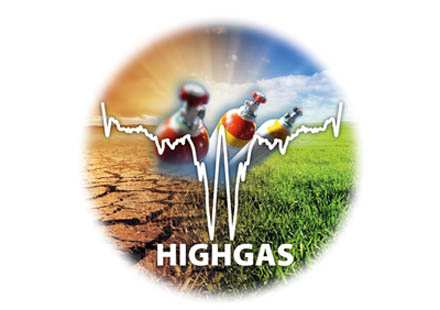Metrology for high impact gases (HIGHGAS)
Measurement of greenhouse gases is crucial in understanding changes in the Earth’s climate. National as well as international legislation is aimed at reducing greenhouse gas emissions and requiring their measurement in the atmosphere.
Such long term observation must be based on accurate and stable standards which meet the requirements of the compatibility goals of the World Meteorological Organization (WMO) and environmental policy makers as well as other regulatory and academic users. Research is required to develop traceable standards with long-term stability for high impact greenhouse gases with challengingly low uncertainties to improve the quality assurance and control processes used for global networks such as those coordinated by the WMO to better assess climate trends.
Within HIGHGAS the following objectives will be addressed:
WP1 - High accuracy primary reference gas mixtures:
- Develop static reference standards (CO2, CH4, N2O and CO) of high accuracy and stability
- Investigate systematic instrumental biases introduced at monitoring stations
- Assess the comparability of traceable reference standards to existing references and scales
WP2 – Dynamic methods for trace amount fractions and dissemination to the field:
- Develop high accuracy dynamic reference standards (CO and N2O) for field calibration
- Develop high accuracy dynamic reference standards for existing and emerging F-gases in the sub nmol/mol range
- Disseminate the developed reference standards and provide comparison to existing global reference scales.
WP3 –Spectroscopic methods for isotopic composition measurements and transfer standards:
- Identify needs and potential impact of spectrometric gas metrology
- Develop complementary spectroscopy for high accuracy CO and CO2 reference standards
- Develop measurement techniques for isotope ratios based on optical spectroscopy to support the development of reference standards and perform source studies.
WP4 – Creating Impact:
- Disseminate traceability, engage stakeholders (atmospheric monitoring community, gas and instrument manufacturers and standardisation organisations) and provide training for the community of users.
- Exploitation of reference standards, methods and calibration devices
- Knowledge transfer and link research activities to current FP7 projects (e.g. ICOS, InGOS and ACTRIS).
Empa’s Laboratory for Air Pollution / Environmental Technology contributes to all work packages of the HIGHGAS project and brings in its knowledge gained in the Swiss National Air Pollution Monitoring Network (NABEL) and in international monitoring activities, such as AGAGE, EMEP or GAW. Furthermore, Empa is designated by the WMO to operate the World Calibration Centre for surface ozone, CO, CH4 and CO2 (WCC-Empa), as well as the Quality Assurance/Scientific Activity Centre Switzerland (QA/SAC). In addition, Empa has many years of experience in the analysis of greenhouse gases (CO2, CH4, N2O) and their isotopic composition by laser spectroscopy and of high-impact F-gases by mass spectrometry.

Dr. Joachim Mohn
Group Leader Emissions & Isotopes
503 - Air Pollution / Environmental Technology


